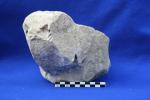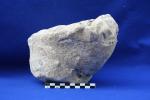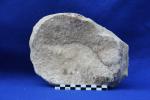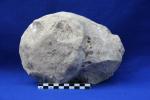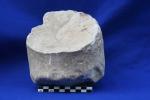
Description
- 1115
- Bearded male head, fragment
- 2nd to 3rd c. AD (Severan?)
- White marble.
- Ht. max ca 8 cm.
- Severely broken and weathered. Fragment of a bearded and mustached head, preserving some of the lower jaw and neck. Most of the head is missing. The neck is cut roughly near the Adam’s-apple. The front of the lower face is broken, chopped inwards diagonally through the mouth, chin and jaw. The piece is so badly eroded that what remains of facial and throat hair are essentially the drill holes of a mustache, and the chin tuft and upper neck hair of a beard.
- This is the fragment of a bearded and mustached head. preserving some of the lower jaw and neck. The neck seems to have been wide and relatively short, the jaw, squared. In current condition, it can't be firmly determined whether the subject was a short-bearded mythological figure like Hercules, or a portrait. The deep drilling of once luxuriant hair, to make strong contrast by chiaroscuro and texture with once polished skin, place the piece as Antonine to third century.
- It is possible to suggest a restricted date in the decades ca 190-220 BC for the fragment. The deeply drilled mustache is extremely rare in Roman portraiture. Even the most heavily bearded sculpted faces, such as those of the Antonine period, have mustaches combed flat against the upper lip. The only comparanda are the more fully mustached images of Septimius Severus (193-211 AD); the feature may in fact be diagnostic. The presence of mustache drilling seems to exclude extant images of rough-featured, short-bearded Hercules or satyrs. In addition to the mustache, the wide, square jaw, the short, stout neck and the somewhat flattened front surface also recall images of Severus (193-211 AD). The fragment may thus come from a portrait of that emperor.
- McCann 1968; Soechting 1972.












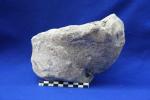
![Download [view]](/villamagna/ark//skins/villamagna/images/results/download_sml.png)


